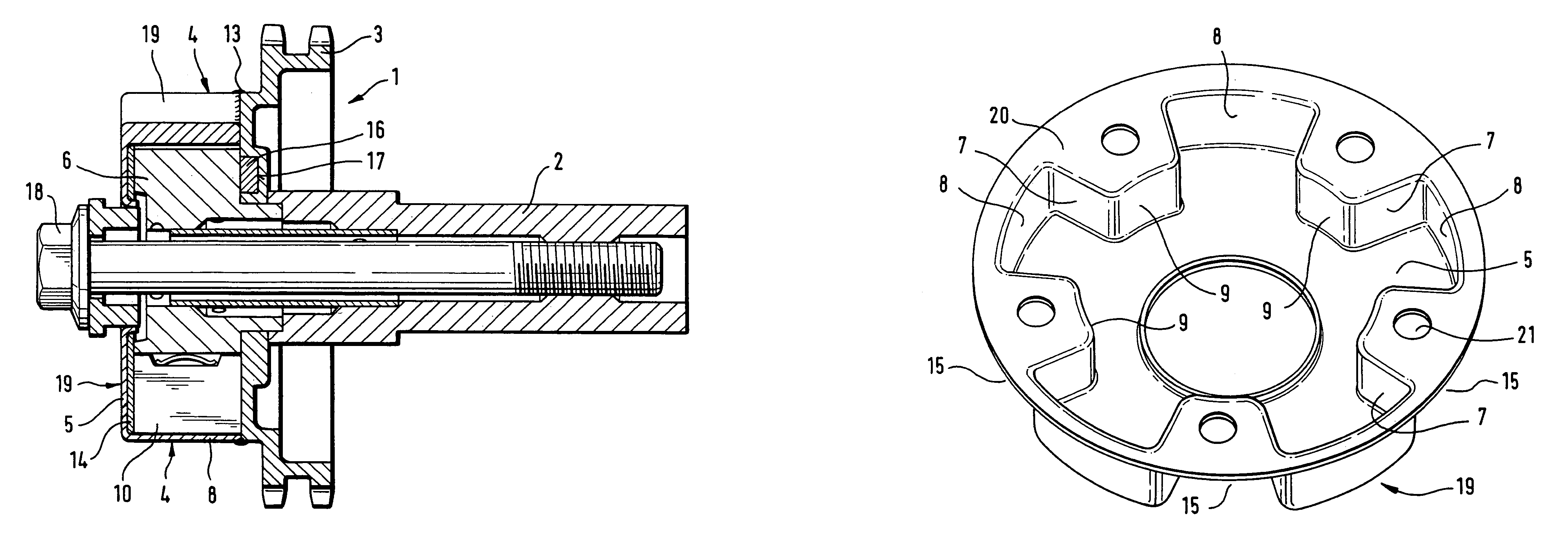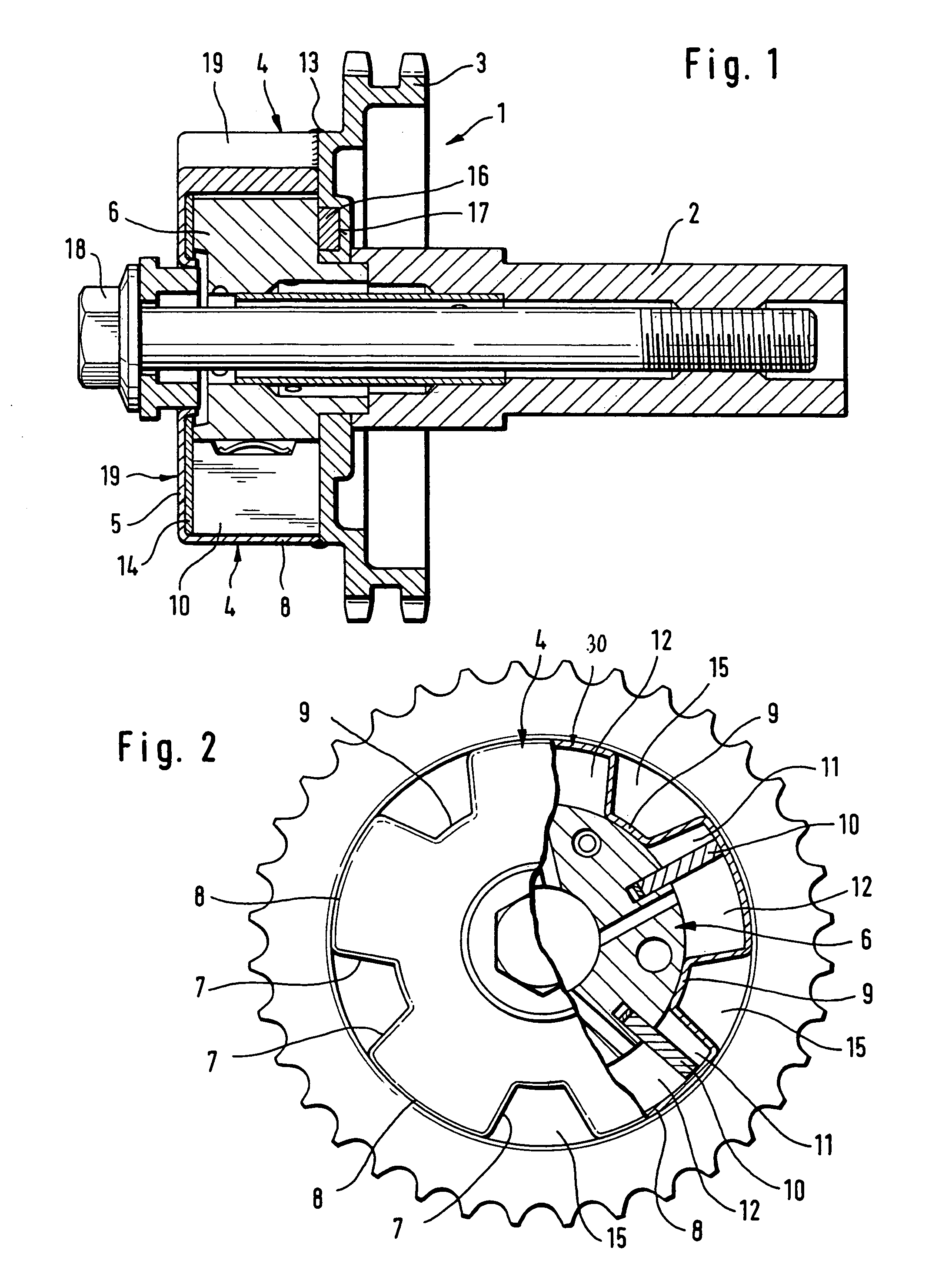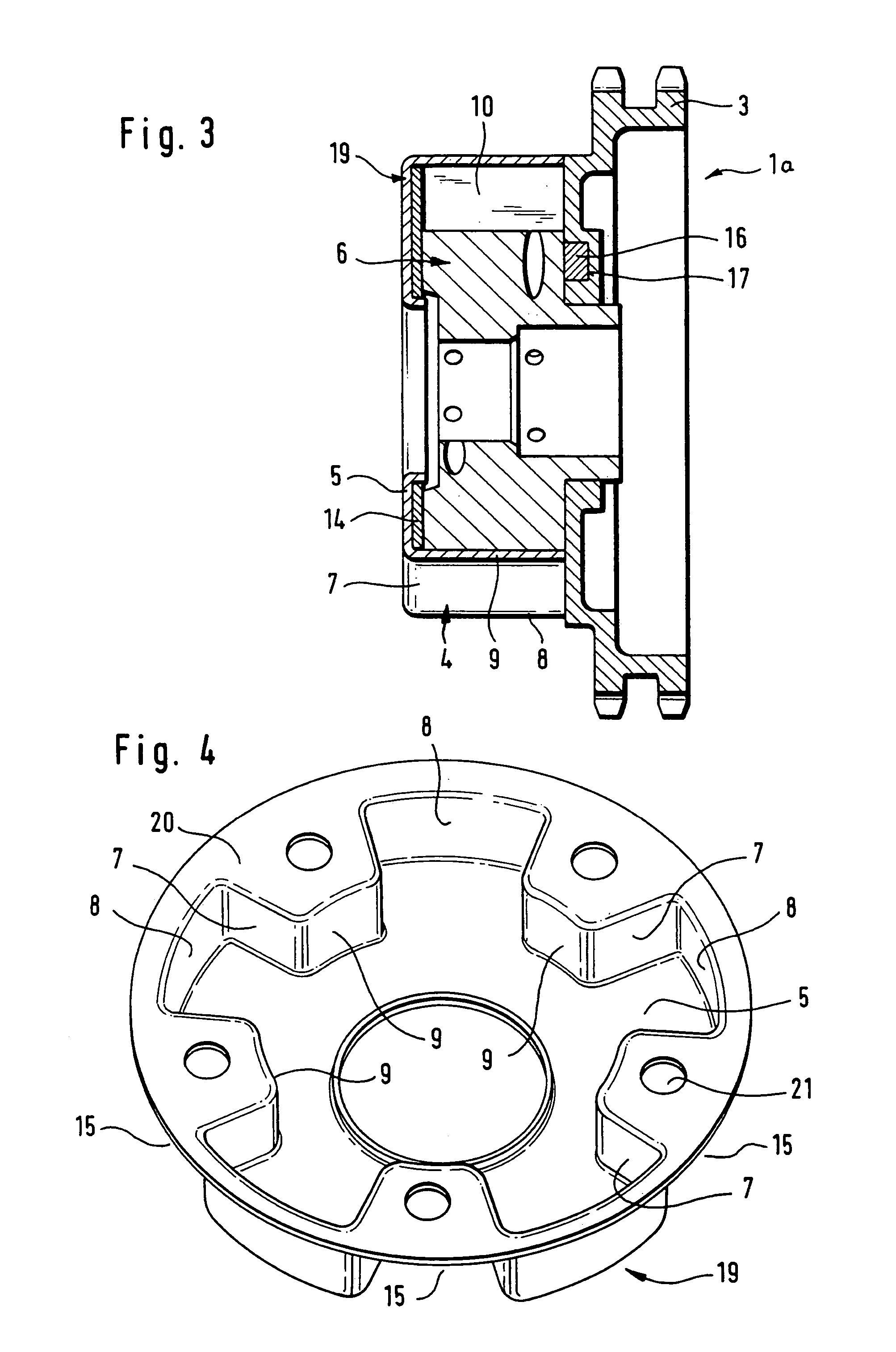Internal combustion engine with hydraulic device for adjusting the rotation angle of a camshaft in relation to a crankshaft
a technology of hydraulic device and internal combustion engine, which is applied in the direction of machines/engines, valve drives, mechanical equipment, etc., can solve the problems of large manufacturing cost of sintered components by material removal process, undesired external oil leakage, etc., and achieves the effect of reducing the wall thickness of the sidewalls of the stator, reducing the size of the hydraulic device, and facilitating manufacturing
- Summary
- Abstract
- Description
- Claims
- Application Information
AI Technical Summary
Benefits of technology
Problems solved by technology
Method used
Image
Examples
first embodiment
[0029]Turning now to the drawing, and in particular to FIG. 1, there is shown a longitudinal section of a hydraulic device according to the present invention, generally designated by reference numeral 1, for adjusting the rotation angle of a camshaft 2 in relation to a crankshaft (not shown). The hydraulic device 1 is implemented as a hydraulic actuator for varying the opening and closing times of gas exchange valves of an internal combustion engine and is operated by a timing pulley 3 which may be connected via a not shown chain to the crankshaft. The hydraulic device 1 includes essentially a tubular stator 4, which is firmly secured to the timing pulley 3, and a rotor 6, which is connected in fixed rotative engagement via an axial central screw 18 to the camshaft 2 and is constructed in the form of a vane wheel having vanes 10. The stator 4 is constructed in one piece with an end wall 5 to thereby exhibit overall a pot-shaped structure, generally designated by reference numeral 19...
second embodiment
[0035]Referring now to FIG. 3, there is shown a longitudinal section of a hydraulic device for rotation angle adjustment according to the present invention, generally designated by reference numeral 1a. Parts corresponding with those in FIG. 1 are denoted by identical reference numerals and not explained again. The description below will center on the differences between the embodiments. In this embodiment, provision is made for a sealing disk or washer 14 which is placed inside the pot 19 and rests against the end wall 5 on the camshaft proximal side. The washer 14 is hereby configured to conform to the inner contour of the pot 19. The provision of the washer 14 is intended for those situations in which the transition from the stator 4 to the end wall 5 of the pot 19 does no define a precise right angle so as to reduce leakage losses.
[0036]FIG. 4 is a perspective view of a modified pot 19 for a hydraulic device for rotation angle adjustment according to the present invention. The p...
PUM
 Login to View More
Login to View More Abstract
Description
Claims
Application Information
 Login to View More
Login to View More - R&D
- Intellectual Property
- Life Sciences
- Materials
- Tech Scout
- Unparalleled Data Quality
- Higher Quality Content
- 60% Fewer Hallucinations
Browse by: Latest US Patents, China's latest patents, Technical Efficacy Thesaurus, Application Domain, Technology Topic, Popular Technical Reports.
© 2025 PatSnap. All rights reserved.Legal|Privacy policy|Modern Slavery Act Transparency Statement|Sitemap|About US| Contact US: help@patsnap.com



